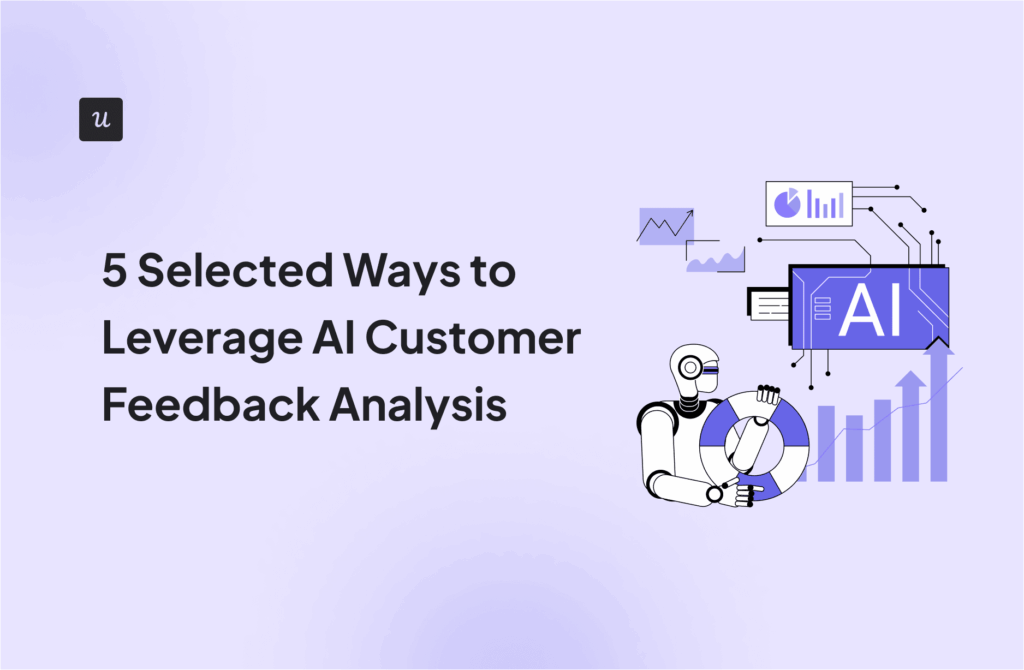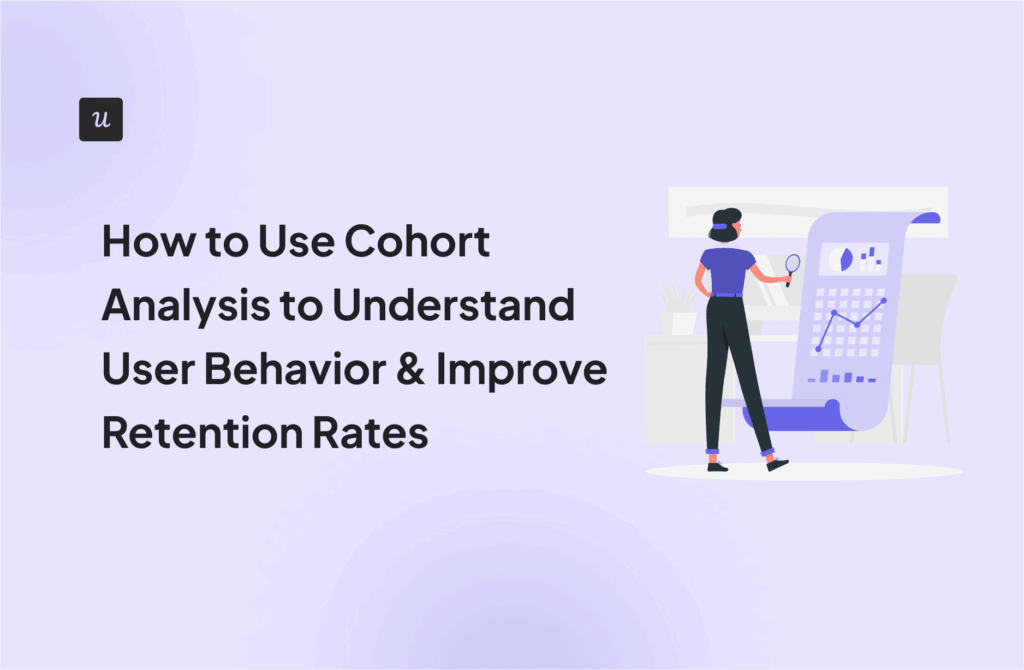Would you like to see into your customers’ minds and understand how they interact with your product? A click tracker is as close as you’ll get to reading minds.
This article will show you different types of click trackers, benefits, and use cases + how to automatically track customer clicks with Userpilot for more effective product analytics.
Try Userpilot Now
See Why 1,000+ Teams Choose Userpilot

TL;DR
- A click tracker records where users click, providing insights to optimize layout and enhance user experience.
- Different click tracking types include in-app behavior click tracking, email click tracking, landing page click tracking, and web page tracking.
- Tracking user click data helps understand user behavior, optimize conversion rates, and improve product development.
- You can use a click tracking tool to:
- Automatically track user clicks without manual setup or engineers.
- Monitor a conversion path.
- Identify drop-off points during onboarding.
- Track feature adoption.
- Discover bugs and usability issues.
- Trigger personalized in-app messages.
- If you want a tool that allows you to collect customer clicks, text inputs, and form changes automatically, segment users based on them, analyze results, and create personalized experiences, find out how Userpilot can help by booking a demo.
What is a click tracker?
A click tracker is a tool used for UX tool tracking that records and analyzes where users click in your app or on your website, landing page, or email. This includes link tracking and interactions with various elements.
One valuable tool for visualizing click data is click maps. These maps display the areas of a page where users click the most, making it easier to enhance user engagement.
Types of click trackers
There are different types of click-tracking software that help you track user behavior:
- In-app behavior click tracking: Automatically captures user clicks within an application so you can understand how users navigate your app, which features they use the most, and where they encounter issues.
- Email click tracking: Monitors clicks within email campaigns so you can measure the effectiveness of your email content and improve your targeting strategies.
- Landing page click tracking: Focuses on tracking clicks on landing pages so you can optimize these pages for conversions by understanding which elements attract the most attention.
- Website click tracking: Records customer clicks across a website so you get insights into customer behavior, helping to improve site navigation, content placement, and overall user experience.
Benefits of click tracking
Click tracking offers several advantages that can significantly enhance your website’s performance and in-app user experience.
Understanding user behavior
A click-tracking tool provides valuable insights into how users navigate your app, website pages, or emails, uncovering patterns, and preferences.
By having a deep understanding of user behavior patterns, you can tailor your content and design to better meet user needs.
Click trackers also provide valuable data and track custom campaigns that help identify usage trends.

Optimizing conversion rates
By tracking customer click data, you can identify which elements drive conversions and which may cause friction.
Visualizing this data on funnels or paths is important for conversion rate optimization, as it allows you to pinpoint areas for improvement, make changes, and ultimately boost product conversions.
Improving product development
A click-tracking tool reveals which features are most and least engaging to users so you can refine your product development strategy and prioritize features that drive engagement and satisfaction.

Use cases of click tracking
User tracking tools have many use cases, some of which include:
Automate the tracking of user clicks to comprehensively understand user behavior
An autocapture feature lets you automatically track user mouse clicks without manual setup or relying on engineers.
This streamlined approach to tracking user activity provides a comprehensive understanding of customer behavior, enabling you to gather valuable insights effortlessly.
Our no-code tool lets you set up automatic tracking quickly and efficiently so you can focus on analyzing data and improving user experience rather than dealing with technicalities.

Monitor conversion events
Click tracking enables precise monitoring of conversion events by capturing every user interaction leading up to a conversion.
This allows you to analyze the effectiveness of various touchpoints in your conversion funnel and identify areas for improvement.

For example, if you want to track user interaction with a new sign-up form, you can monitor how often users click on key dynamic elements and follow their journey from form submission to successful registration.
By analyzing this data, you can identify friction points. If there’s a high number of clicks on the ‘submit’ button but a low conversion rate, it may indicate issues with the form or subsequent confirmation steps.
This detailed conversion funnel analysis allows you to optimize the form based on data. For example, you might experiment with simplifying fields or improving the confirmation process.
Identify where users might be dropping off during onboarding
By analyzing click patterns, a click tracker helps you pinpoint where users drop off during onboarding.
This helps you address friction points and improve the user onboarding experience, ensuring a smoother transition for new users.
For example, if you notice a high drop-off rate on the step where users are asked to configure settings, you can perform a detailed drop-off analysis to understand why this is happening. You might find the configuration step is too complex or lacks clear instructions.
To improve this step, you could simplify the process or provide additional guidance to improve in-app onboarding.
Measure feature adoption
Click tracking software helps you understand adoption rates so you can gauge the success of your feature launches and identify areas for improvement.

For example, after launching a new analytics dashboard in your app, you can use click tracking tools to monitor how often users access the dashboard’s various components.
If engagement with advanced features like custom reporting is lower than expected, you can analyze this data to identify barriers. This insight allows you to develop strategies to drive feature adoption, such as providing more educational content or simplifying the feature’s usability.
Identify bugs and usability issues
Click tracking helps uncover bugs and usability issues by providing detailed insights into user interactions. This lets you pinpoint where users encounter problems and address them effectively, reducing user frustration.
For example, you can monitor user activity by implementing click tracking on the checkout page, including buttons like ‘add to cart,’ ‘proceed to checkout,’ and ‘complete purchase.’
If you notice a pattern of users clicking the ‘complete purchase’ button multiple times without a response, it may indicate a usability issue.
This insight helps you fix the problem, ensuring users can complete their purchase without difficulties. Addressing such issues not only enhances product usability but also prevents costly bugs.
Trigger personalized in-app messages
Some click-tracking tools allow you to trigger personalized in-app messages based on customer behavior.
For example, if a customer clicks on a specific feature, you can trigger a relevant tip, survey, or other message to enhance their experience and provide timely assistance.

Personalized in-app messaging can significantly boost user engagement and contribute to product-led growth, ensuring messages are tailored to users’ specific actions and needs.
While many tools offer click tracking and analytics, only a few, like Userpilot, provide a complete suite that includes analytics, engagement, and feedback.

How to automatically track user clicks with Userpilot
With Userpilot, you can effortlessly track customer clicks to gain valuable insights into user behavior and improve your app’s performance. Here’s how to do it:

2. Download and install the Userpilot Chrome extension for easy access and setup.

3. Install Userpilot on your app.

4. Click ‘Data’ on the left-side menu and choose ‘Events.’

5. Go to the ‘Raw events’ tab to view all recorded events.

6. Filter results and label an event for detailed event analytics.

This process allows you to perform retroactive analysis on user interactions, providing comprehensive data to optimize your app and enhance user experience.
Conclusion
A click tracker can become a powerful ally by offering a glimpse into your users’ behavior and preferences so you can tailor your product to their needs.
Userpilot offers more than just click tracking features—it not only automatically captures clicks but helps you analyze what those clicks mean and create better in-app experiences based on the click data.
If you want to learn more, book a demo with Userpilot now, and we’d be happy to chat!







